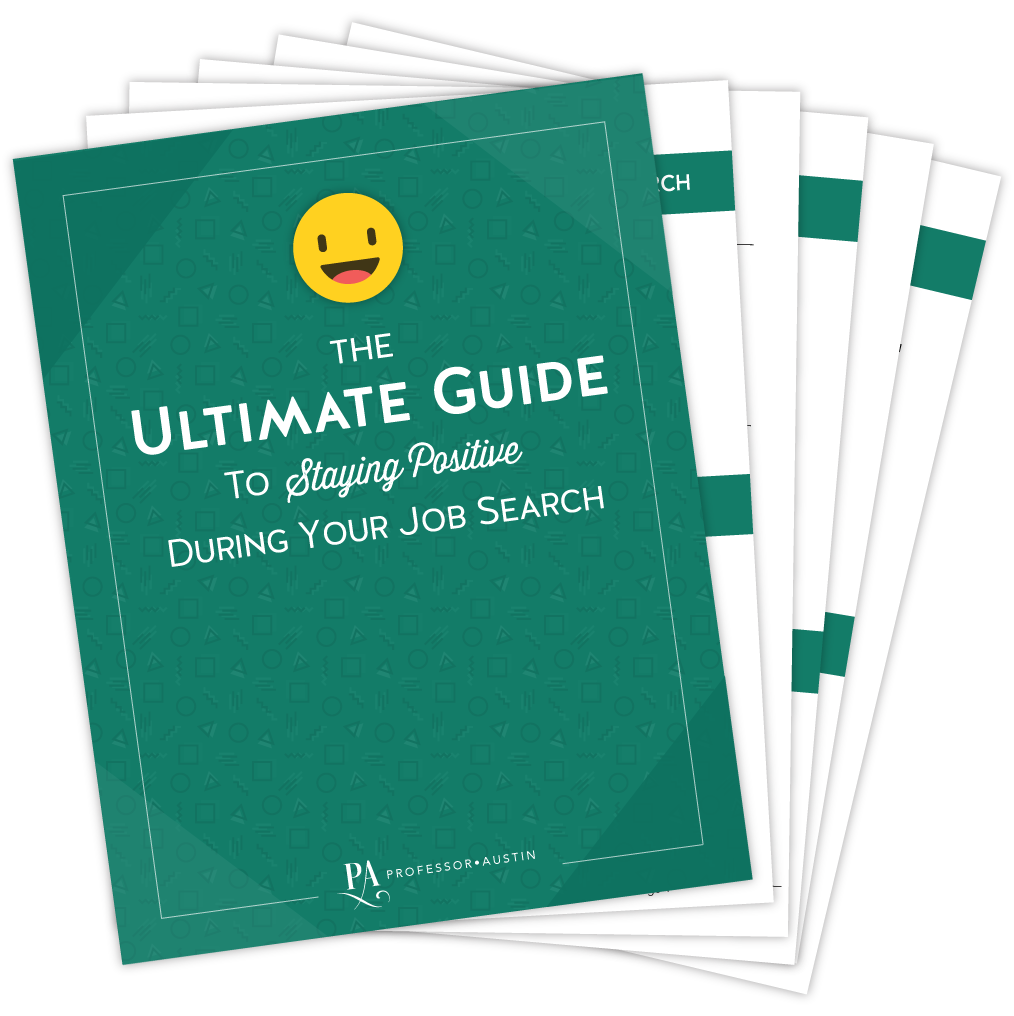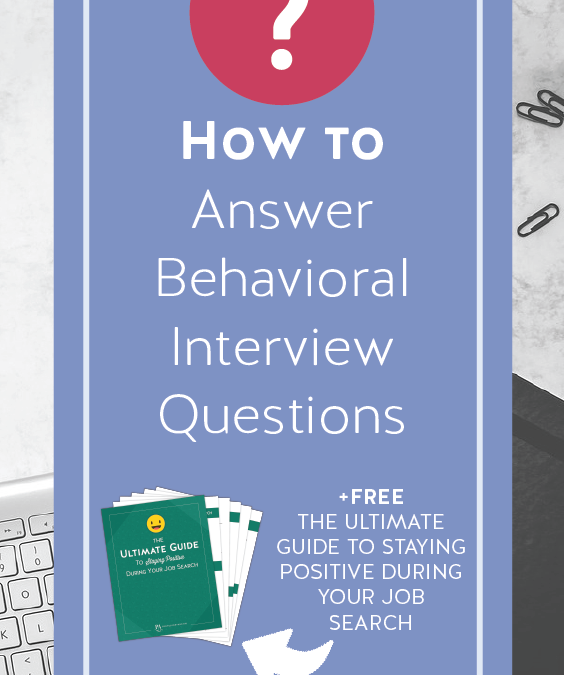Let’s face it; we all dread behavioral-based interview questions. They tend to put you on the spot and can be very difficult to answer. However, interviewers love to ask them.
But don’t worry! I’ve got you covered. Right here, I’ll teach you 2 simple steps that will prepare you to answer almost any behavioral interview question.
You’ll also learn what this type of job interview question is, why interviewers ask them, and how to structure your responses to stand out from the other candidates.
In particular, you’ll learn how to answer behavioral interview questions through storytelling instead of through canned responses.
If we’ve never met before, I’m Heather Austin from ProfessorAustin.com and The Career Club on Facebook, and here, I share simple solutions to help you build a business or launch a career you love.
The Ultimate Guide to Surviving Your Job Search

A step-by-step resource guide with action items you can complete today to help you overcome the frustration and overwhelm of the job search.
About Behavioral Interview Questions
Before we jump into the 2 simple steps that will help you answer almost any behavioral interview question, remember that interviewers ask these questions to evaluate your past problem-solving experience so that they can determine how you will solve problems in the future.
The good thing about these types of questions is that they make your interview more conversational. Rather than provide just a yes or no answer, you get the opportunity to give a more detailed response.
You’ll know you’re being asked a behavioral interview question when the question starts with something like: “give me an example of,” “describe a situation where,” or “tell me about a time when.” Now I’m sure you want to know: how do you answer one?
Step 1 – Tell a Compelling Story
The key to answering these types of questions well is to paint a picture of a past problem you solved and demonstrate the results you achieved. To do this properly, you need to captivate and engage your interviewer in a really good story.
This will help validate your competencies and make you more likable. So think back to specific situations that showcase your greatest accomplishments and demonstrate some of the biggest problems you solved.
These problems should be a situation that ended positively in some way; maybe you earned some type of promotion, secured a large contract, or resolved a conflict that could have been detrimental to your company.
If you’re having a hard time thinking of good stories, refer back to the job posting. Review the posting carefully for key terms that might jog your memory of a time that you really excelled with a specific skill listed.
With your stories in mind, you are now ready to move on to step 2.
Step 2 – Structure Your Story Using the STAR Method
So we know that every good story has a beginning, middle, and end. The STAR approach is a very common and effective interview technique that will help you organize and present your stories in a meaningful way.  Situation and Task This is the beginning of your story. This is where you want to set the scene by describing the event or challenge you faced.
Situation and Task This is the beginning of your story. This is where you want to set the scene by describing the event or challenge you faced.
Provide as much context and background as you can without going overboard with details. Explain what you were tasked with in terms of a goal or target. The key to doing well here is to describe an exact situation and not generalize.
Action This is the middle of your story. Describe the action steps you took to solve the problem. Make sure you use words like “I” and “me” rather than “we” and “our.” Your interviewer wants to know what you did, not what your team did.
Result This is the end of your story. Explain the results you achieved from solving the problem. Talk about the outcome and perhaps what you learned from this situation. Try to make it quantifiable.
An Example
Let’s put it together in an example. Let’s say your interviewer asks you a question like: “Tell me about a time you handled a difficult situation with a client or customer.” Here’s one way you can answer this question telling a compelling story using the STAR technique:
“While working as an advertising manager, I was tasked with developing an advertising campaign for one our larger clients. The campaign targeted an event that would host important business and community leaders.
We had a very strict timeline and a limited budget, so I got to work straight away. Well, halfway into the project, the department director informed me that he had miscalculated the project deadline. Unfortunately, we needed to complete the project 30% faster than planned.
Given our existing processes and systems, I didn’t believe we could get the project done in time while meeting all of the client’s expectations. Rather than risk losing the client, I saw this as a good opportunity to implement a strategy I had been thinking of that would streamline our advertising campaign process.
I was thrilled with the result. Because of the new systems I put in place, we got the project done on time and under budget. I was then later recognized at our annual banquet dinner for my hard work and dedication to this account.”
In Conclusion
When you go to answer a behavioral interview question, make sure you paint a picture of a problem you solved and the results you achieved using the STAR approach. You’ll do great!
The Ultimate Guide to Surviving Your Job Search

A step-by-step resource guide with action items you can complete today to help you overcome the frustration and overwhelm of the job search.

The Ultimate Guide to Surviving Your Job Search
Enter your name and email address to gain instant access to your free guide. Here’s to a happier job search!!
